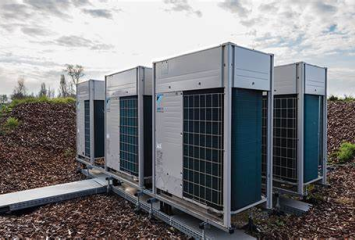
Variable Refrigerant Volume (VRV) Air conditioning systems installation and maintenance
Variable Refrigerant Volume (VRV) Air conditioning systems installation and maintenance

Variable Refrigerant Volume (VRV) Air conditioning systems installation and maintenance
The Variable Refrigerant Volume (VRV) Air Conditioning Systems Installation and Maintenance course provides comprehensive training on the installation and maintenance of VRV air conditioning systems. VRV systems, also known as Variable Refrigerant Flow (VRF) systems, are advanced HVAC systems that offer energy-efficient and flexible cooling and heating solutions for various buildings and spaces.
- Understanding VRV Technology: Gain knowledge about the principles and operation of VRV systems, including variable refrigerant flow control and individual climate control of air conditioning zones .
- System Design and Installation: Learn about the design considerations for VRV systems, including refrigerant piping layout and indoor unit placement. Understand the installation procedures for VRV systems, including proper refrigerant piping installation and electrical connections.
- Maintenance and Troubleshooting: Acquire skills in routine maintenance tasks for VRV systems, such as cleaning filters, checking refrigerant levels, and inspecting condensate drainage. Learn how to diagnose common issues and troubleshoot problems in VRV systems .
- Energy Efficiency and Optimization: Explore strategies to maximize energy efficiency in VRV systems. Understand how to optimize the performance of VRV systems through advanced software and hardware technologies. Learn about the combination of VRV, VRT, and VAV technologies for energy savings and comfortable air conditioning .
- Safety and Regulations: Understand the importance of safety protocols and regulations associated with VRV system installation and maintenance. Learn about the relevant standards and guidelines, such as ASHRAE 15.
- Practical Application: Engage in practical exercises to apply the knowledge gained during the course. This may include system installation simulations, troubleshooting scenarios, or hands-on activities related to VRV systems.
- Introduction to VRV Systems
- Overview of VRV technology and its applications
- Understanding the principles of variable refrigerant flow control
- Benefits of VRV systems, including energy efficiency and flexibility Introduction to the components of VRV systems, such as outdoor units, indoor units, refrigerant piping, and thermostats
- System Design and Installation
- Design considerations for VRV systems, including refrigerant piping layout and indoor unit placement- Installation procedures for VRV systems, including proper refrigerant piping installation and electrical connections- Understanding the extended maximum height differences between indoor and outdoor units and its impact on system support for different buildings
- Maintenance and Troubleshooting
- Routine maintenance tasks for VRV systems, including cleaning filters, checking refrigerant levels, and inspecting condensate drainage- Diagnosing common issues and troubleshooting problems in VRV systems- Understanding the importance of safety protocols and regulations associated with VRV system maintenance
- Energy Efficiency and Optimization
- Strategies to maximize energy efficiency in VRV systems
- Optimizing the performance of VRV systems through advanced software and hardware technologies
- Exploring the combination of VRV, VRT, and VAV technologies for energy savings and comfortable air conditioning
- Review and Practical Exercises
- Review of key concepts and topics covered throughout the course
- Practical exercises to apply the knowledge gained, such as system installation simulations or troubleshooting scenarios
- HVAC Technicians and Installers: Professionals who are involved in the installation, maintenance, and repair of air conditioning systems, including VRV systems.
- Facility Managers and Building Engineers: Individuals responsible for the operation and maintenance of HVAC systems in commercial buildings, residential complexes, or industrial facilities.
- Engineers and Designers: Professionals involved in the design and engineering of HVAC systems, including VRV systems.
- Maintenance Personnel: Individuals responsible for the routine maintenance and troubleshooting of HVAC systems, including VRV systems, in residential, commercial, or industrial settings.
- Students and Trainees: Individuals who are pursuing a career in the HVAC industry and wish to gain knowledge and skills in the installation and maintenance of VRV air conditioning systems.